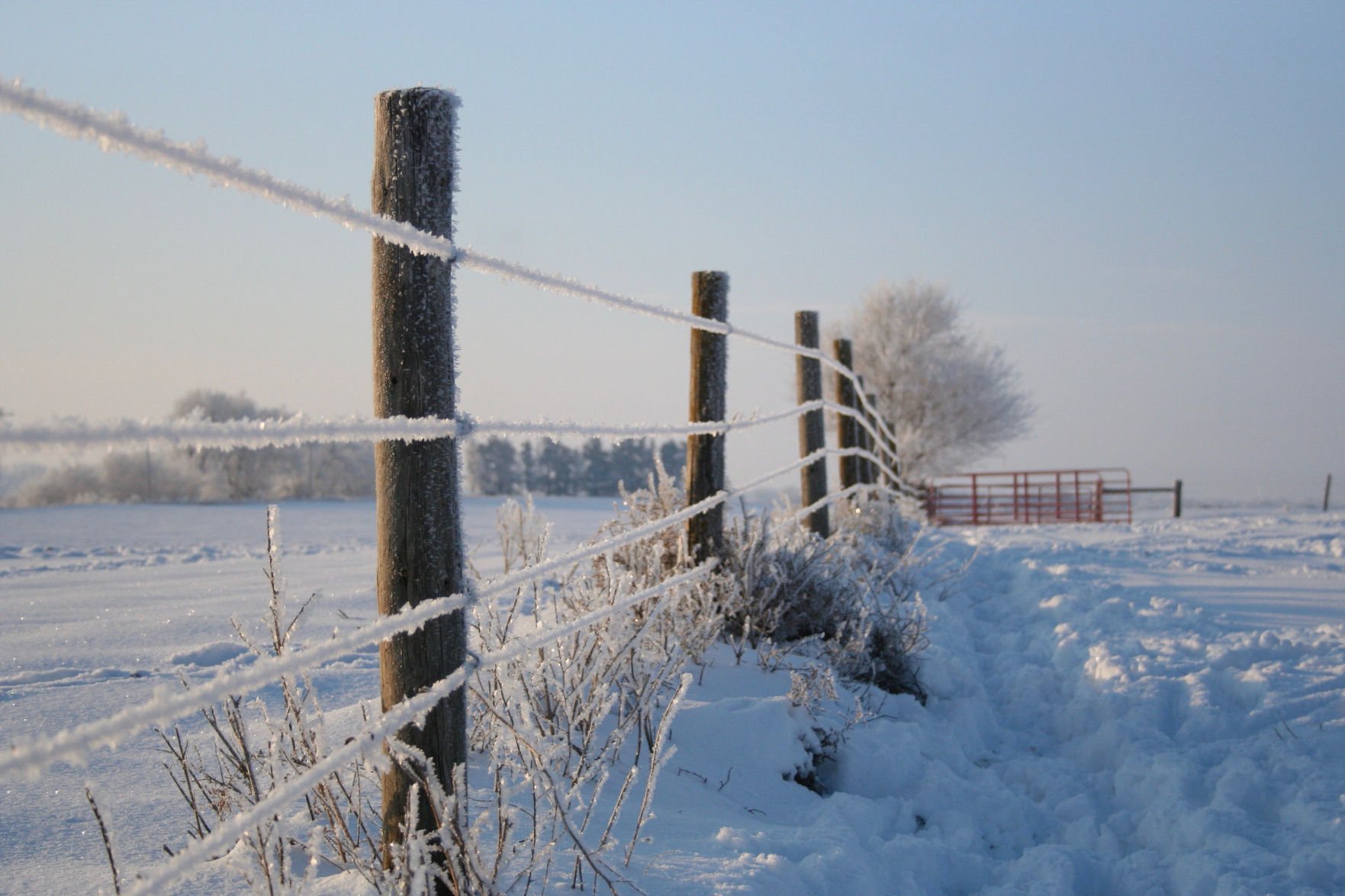For us, a cold winter night is improved by a toasty fireplace and something warm to eat. For cowherds, especially when cows begin to calve, winter can be uncomfortable if cattlemen are not checking off all the winter preparedness boxes.
David Lalman, professor and Extension beef cattle specialist at Oklahoma State University, says what cattlemen do between now and calving will directly impact next year’s calf crop and pregnancy rate.
“A long standing rule of thumb, which has been proven time and again, is to manage cows so that they are in a body condition score of five, the day they calve, this amounts to moderate condition on a scale of one to nine,” he said. “A substantially higher breed back rate is achieved in first calf-heifers when they calve in a body condition score of six. Heifers have a longer post-partum interval from calving to first heat cycle and the thinner they are when they calve, the more dramatic that extended post-partum will be.”
Lalman says the most important factor for fertility is the cow’s body composition the day she calves. According to Lalman, the length of the postpartum interval can be modified slightly by the level of nutrition just prior to and after calving. However, that impact is minor compared to the impact body condition at the time of calving. He says anyone in the cattle industry has heard this time and time again but it continues to be an important principle.
“Moderate body condition at the time of calving is also an important driver of calf vigor and colostrum quality. When cows calve in thin condition, immunoglobulin concentrations in colostrum are low and on top of that, calves take longer to nurse. Those two factors combine to compromise the critical passive immunity system at the time of birth.”
“Certainly grazing and nutritional management leading up to calving each year is important,” Lalman said. “However, longer term, ranch resources, cowherd genetics and supplemental feed required should be viewed as a system. Good managers will always be watching for opportunities to increase efficiency in their system. Said another way, if the winter feed bill is high compared to other well-managed operations in the region or if you are frequently having to make-up ground during the winter months, something needs to change.”
Lalman says a shift to later calving, weaning earlier or modifying genetics to better fit forage resources could lead to lower input costs, especially during winter.
Being a diligent cattle raiser during the colder months means planning ahead and knowing your cows. Short term success requires common sense. Lalman says with a winter storm approaching, whether you have calves being born or not, it is always important to provide a windbreak.
“Ruminant animals have their own internal heater—the rumen. Consequently, they can withstand cold temperatures if they have relief from the wind and if their hair coat is dry. Natural windbreaks such as trees, brush and canyons, work great. You don’t have to have a barn.”
In terms of preparing for a winter storm, anticipating ice or deep snow cover that could limit access to the animals means getting some roughage out ahead of time where cattle can eat while relatively close to shelter. Equally, if not more importantly than food, is water.
“If they don’t have a freeze-proof water source, someone has to chop ice consistently. Generally speaking, cattle raised in Oklahoma are naïve when it comes ice because they don’t see it often. Once in a while, we will get an extended period of extreme cold and this is when you hear about cattle drowning in ponds. Keeping the water open for drinking will not insure the cattle stay off the ice, but it will certainly reduce risk.”
To be certain you are ready for whatever winter can muster up, keep the long- and short-term principles in mind, with equal parts common sense, when wintering cattle.
Lacey Newlin can be reached at [email protected].



